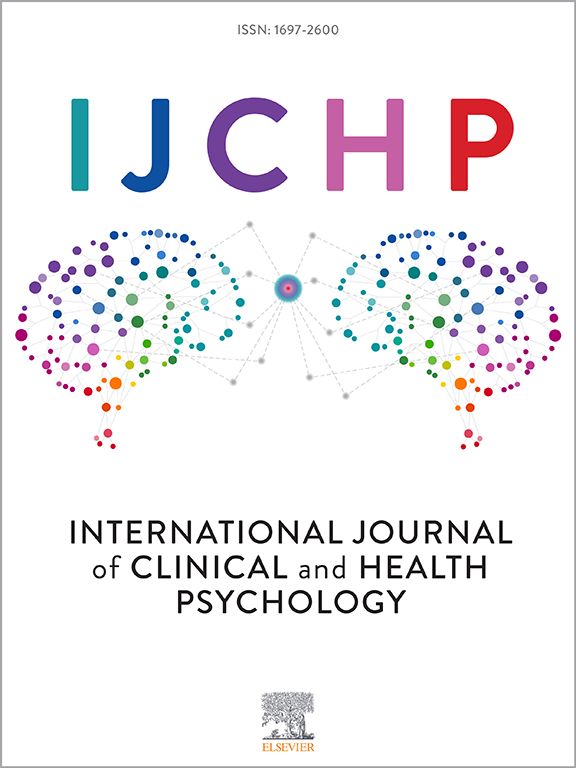Clinical physiology of circadian rhythms: A systematic and hierarchized content analysis of circadian questionnaires
IF 4.4
1区 心理学
Q1 PSYCHOLOGY, CLINICAL
International Journal of Clinical and Health Psychology
Pub Date : 2025-04-01
DOI:10.1016/j.ijchp.2025.100563
引用次数: 0
Abstract
Circadian rhythms are near-24 h patterns of physiology and behavior associated with several physical and mental health outcomes. Self-report questionnaires are routinely used and practical tools to assess circadian rhythms. However, the extent to which these questionnaires capture the relevant parameters and can be used interchangeably is unknown. We investigated different types of circadian manifestations using 14 circadian self-report questionnaires for adults. A systematic and hierarchical content analysis was combined with a visualization method. Jaccard indices were calculated to quantify the degree to which the questionnaires overlapped. Content analysis revealed 40 distinct manifestations, which we classified into five dimensions (“circadian phase,” “circadian amplitude and stability,” “nycthemeral timing,” “nycthemeral regularity,” and “circadian complaints"). The average Jaccard index was 0.150, indicating very weak content overlap. None of the 14 questionnaires explored all five dimensions. The Composite Scale of Morningness and the Morningness-Eveningness Questionnaire exhibited greater, but still limited, overlap with the other questionnaires (Jaccard indices of 0.255 and 0.251, respectively), and are the best instruments for assessing the circadian phase. Nycthemeral timing, which must be analyzed to measure the circadian misalignment in clinical and research settings, is only explored by the Munich Chronotype Questionnaire, but that instrument does not evaluate circadian amplitude and stability and only partially assesses nycthemeral regularity. Based on our preliminary analysis, we make recommendations regarding the circumstances in which some circadian questionnaires could prove more useful than the others. The results might also aid the definition and investigation of circadian health at the crossroads of physiology and behavior.
昼夜节律临床生理学:昼夜节律问卷的系统化、层次化内容分析
昼夜节律是与几种身心健康结果相关的近24小时的生理和行为模式。自我报告问卷是评估昼夜节律的常规和实用工具。然而,这些问卷在多大程度上捕获了相关参数,并可以互换使用是未知的。我们使用14份成人昼夜节律自我报告问卷调查了不同类型的昼夜节律表现。将系统化、层次化的内容分析与可视化方法相结合。通过计算Jaccard指数来量化问卷重叠的程度。内容分析揭示了40种不同的表现,我们将其分为5个维度(“昼夜节律阶段”、“昼夜节律幅度和稳定性”、“昼夜节律时间”、“昼夜节律规律”和“昼夜节律抱怨”)。平均Jaccard指数为0.150,表明内容重叠非常弱。14份问卷中没有一份涵盖了所有五个维度。晨性综合量表和晨性-均匀性问卷与其他问卷具有较大的重叠,但重叠程度有限(Jaccard指数分别为0.255和0.251),是评估昼夜节律阶段的最佳工具。夜行时间是临床和研究中测量昼夜节律失调所必须分析的,只有慕尼黑时间类型问卷(Munich Chronotype Questionnaire)对其进行了研究,但该工具不评估昼夜节律的幅度和稳定性,仅部分评估夜行规律。根据我们的初步分析,我们对某些昼夜节律问卷可能比其他问卷更有用的情况提出了建议。这些结果也可能有助于生理和行为交叉的生理健康的定义和研究。
本文章由计算机程序翻译,如有差异,请以英文原文为准。
求助全文
约1分钟内获得全文
求助全文
来源期刊

International Journal of Clinical and Health Psychology
PSYCHOLOGY, CLINICAL-
CiteScore
10.70
自引率
5.70%
发文量
38
审稿时长
33 days
期刊介绍:
The International Journal of Clinical and Health Psychology is dedicated to publishing manuscripts with a strong emphasis on both basic and applied research, encompassing experimental, clinical, and theoretical contributions that advance the fields of Clinical and Health Psychology. With a focus on four core domains—clinical psychology and psychotherapy, psychopathology, health psychology, and clinical neurosciences—the IJCHP seeks to provide a comprehensive platform for scholarly discourse and innovation. The journal accepts Original Articles (empirical studies) and Review Articles. Manuscripts submitted to IJCHP should be original and not previously published or under consideration elsewhere. All signing authors must unanimously agree on the submitted version of the manuscript. By submitting their work, authors agree to transfer their copyrights to the Journal for the duration of the editorial process.
 求助内容:
求助内容: 应助结果提醒方式:
应助结果提醒方式:


